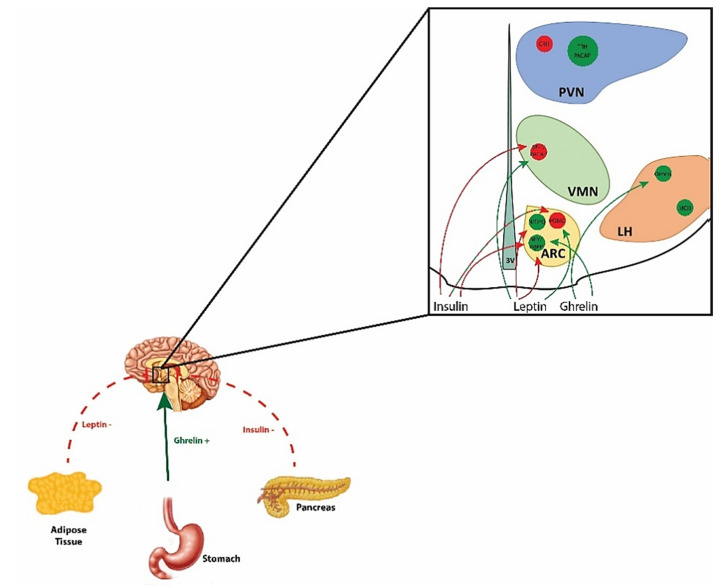Figure 1.
Schematic diagram illustrating the interplay between peripheral hormones and the homeostatic energy balance circuitry. Hormones like leptin and insulin released from adipose tissue and the endocrine pancreas, respectively, exert anorexigenic effects, whereas ghrelin released from the gastric mucosa exerts orexigenic effects. Leptin’s appetite-suppressing actions are mediated via excitatory effects on anorexigenic POMC and SF-1/PACAP neurons, as well as inhibitory effects on orexigenic NPY/AgRP and N/OFQ neurons. Insulin also inhibits NPY/AgRP neurons and, paradoxically, SF-1/PACAP neurons as well. Insulin’s effects on POMC neurons are dependent upon prevailing levels of tyrosine protein phosphatases. On the other hand, ghrelin’s appetite-promoting effects are due to its excitatory effects on NPY/AgRP and orexin neurons.

